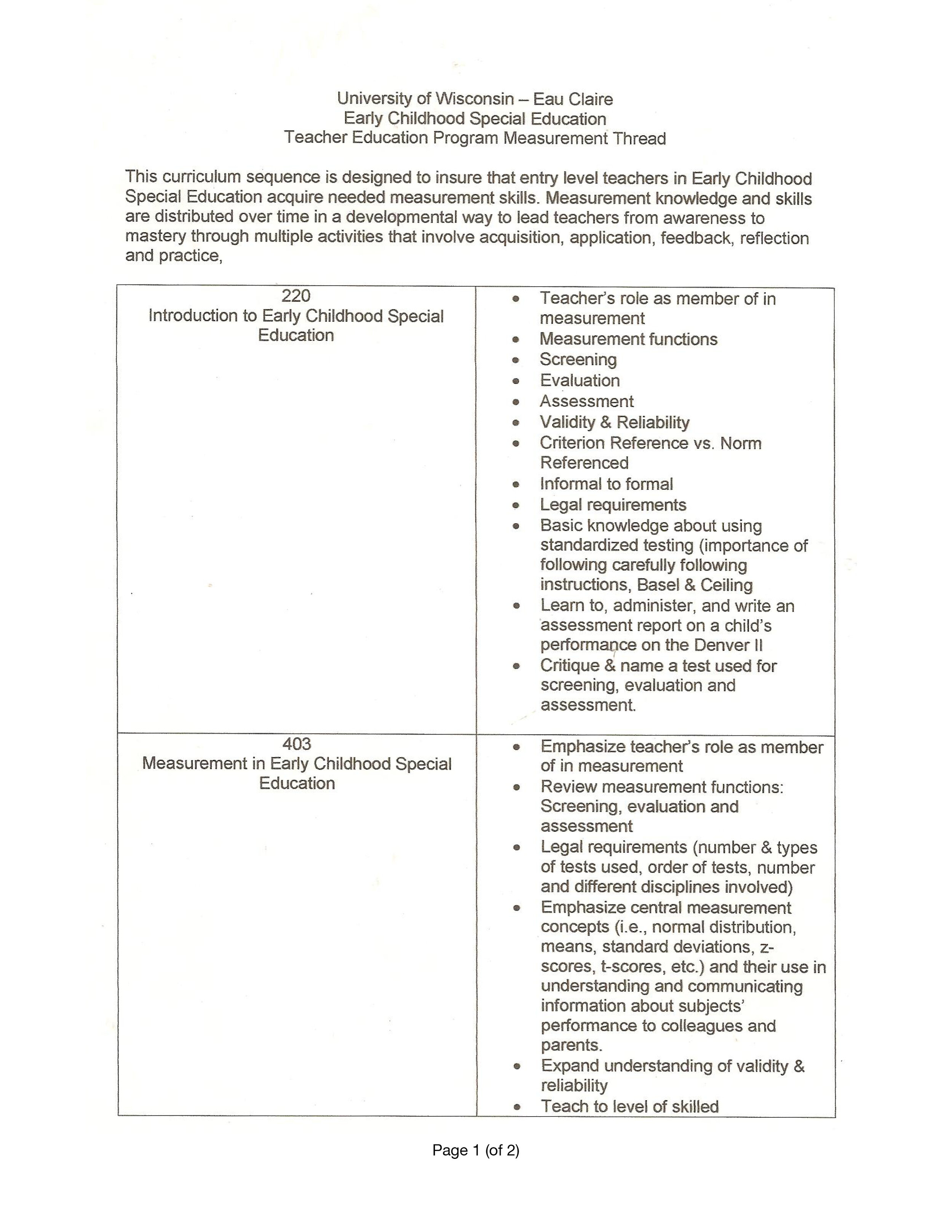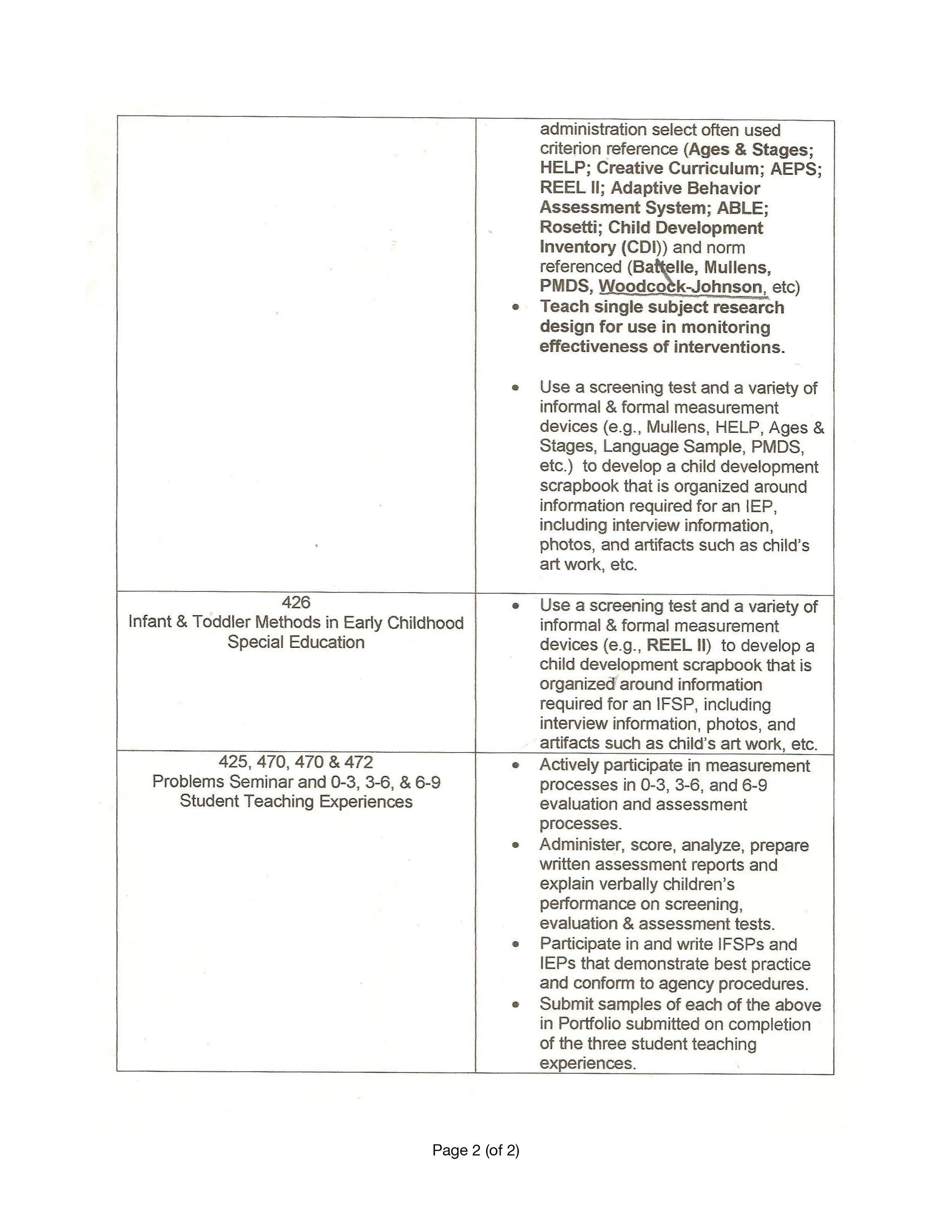Brunner’s Spiral Curriculum Model
Each of the syllabi for the content specific ECSE courses listed in the college catalogue and program brochures are presented in this website. As noted previously, the ECSE program was designed to build knowledge and skills prescribed by the State's ECSE teacher training certification requirements and later, also by the Wisconsin Teaching Standards. These competencies and standards were analyzed, translated into performance outcomes and distributed in what we perceived was a developmental manner, leading from basic knowledge to mastery of skills. Readers are encouraged to examine how knowledge and skills for each of the State's ten general competency threads were distributed so as to facilitate learning through expanded information and skill practice. It should also be noted that course related fieldwork was required in four of the courses described prior to student teaching. The focus of each of the fieldwork experiences was related to learning outcomes for each of the courses. The following chart shows how the assessment/measurement information was distributed in a purposeful manner throughout the students training experiences. Readers are encouraged to review the program goals, description and practice sections in “ECSE History: Peering into the Past” on this website.
In 1975 our ECSE program competencies were based on ten general role related goals that were identified and validated through a Delphi process that involved the State's practicing teachers, therapists, university instructors, administrators and faculty from each of the public and private institutions of higher education that were involved in preparation of early childhood education teachers. Each of these threads was analyzed to form the basis for what would later become a developmental learning sequence across our coursework:
Screening
Assessment
Curricular Strategies
Instructional Activities
Instructional Strategies
Family Involvement
Paraprofessionals and Volunteers
Interagency Cooperation
Administrative Aspects
Self-Improvement
Screening and Assessment/measurement Goals
The measurement or assessment thread was one of ten competency threads that served as a framework to address ECSE teacher training outcomes. These threads initially focused on children ages birth to 5. As program needs changed, these threads were reviewed by practicing teachers and modified by our project staff to better prepare graduates for a wider range of teaching responsibilities. The additional outcomes included the learning needs of learners in the first through third grades in both special and regular education classrooms. Reading, math, and social skills were integrated in the program and additional courses and student teaching experiences were added. Every student was required to complete a supervised practicum at each of the 3 levels.
Measurement Topic Distribution
Our program design was based on Brunner's idea to purposefully distribute learning across time to facilitate learning by building understanding and skill through multiple exposures and opportunities to practice.
The FIGURE below shows how we planned to distribute knowledge and skills related to the “Assessment” competency category throughout the program. Left figure: shows “Assessment” as 1 of the 10 pie-shaped competency categories. Right figure: shows how the related knowledge and skills are distributed in a developmental manner, leading from an introduction to practice (student teaching) in the required courses and experiences in the program.
The following charts show how the measurement topic was distributed across the introductory (220), assessment (403), methods (421 & 426) and student teaching coursework.
It should be noted that in the 1980's Wisconsin's Birth to Three Program Procedures elaborated on the 1970's measurement practices and included Child Find, Screening, Evaluation, and Assessment. Evaluation was defined as practice associated with determining eligibility.
an Example of a required learning project Related to the Measurement competencies
426 Child Development Activity
Note that this activity involves establishing rapport with the child's parent, using the Ages & Stages screening, the EIDP and the Mullin tests and discussing the results with the child's parent. This is done after the students has completed course (220) work that introduced them to information about screening, criterion and norm referenced tests and a course (403) were they learned how to select, administer, interpret and report test results.
You can also see an example of a competency-related learning project on this website at: Curriculum > 426/626 Intervention (0-3).
Back to the top | Next: Program Description >







